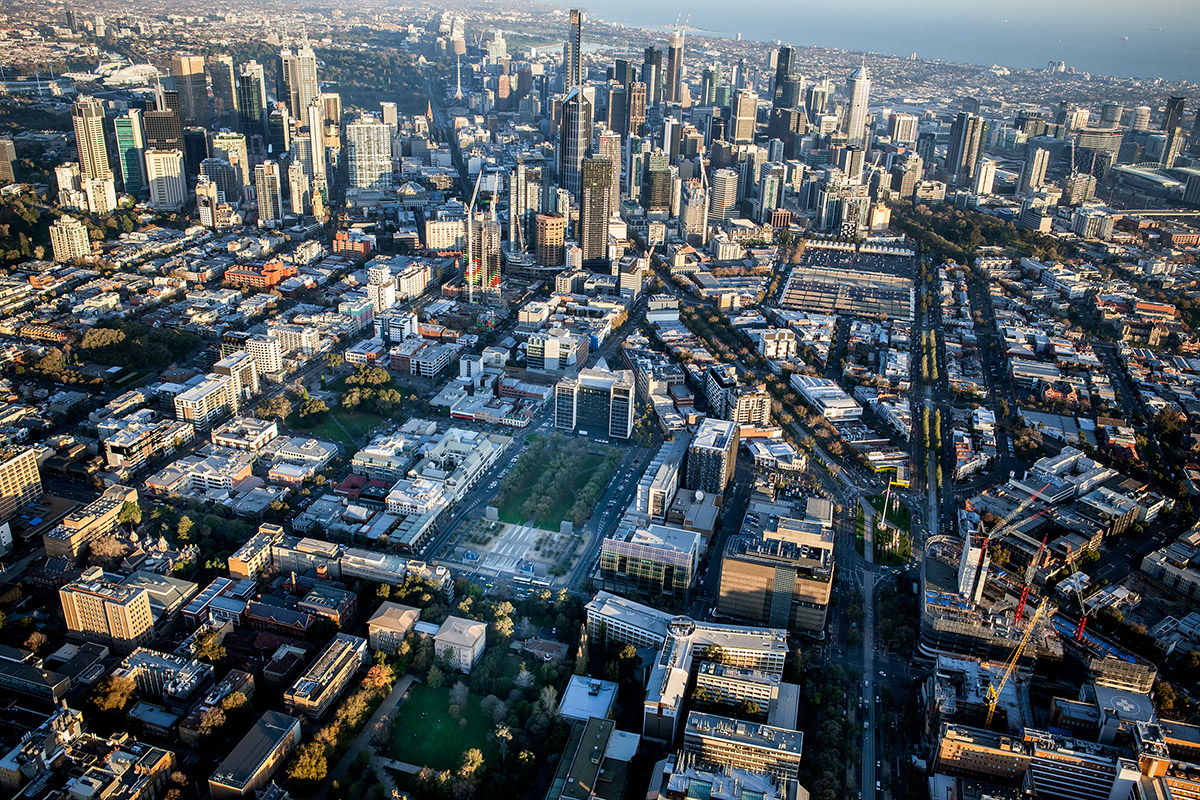Urban heat island mitigation
Most of the world’s population lives in built up areas, where temperatures are higher than the surrounding rural areas as a result of reduced natural, vegetated landscapes and increased dark, paved surfaces that store heat. This effect is known as the urban heat island (UHI), and has been recognised for many decades. Water and vegetation play a very important role in managing temperatures in built up areas, and mitigating the UHI effect. Heat stress has a direct impact on human health, and therefore measures to reduce temperatures, particularly in hotter periods, improve health and well-being.

Adelaide Airport Irrigation Trial
South Australia
A trial of irrigation of large areas of vegetation at Adelaide airport demonstrated significant reductions in local temperatures.
Dubbo Urban Heat Island Amelioration Project
New South Wales
Increasing urban canopy cover in an area of high heat exposure with a vulnerable population to mitigate heat, treat stormwater, improve local amenity and adapt to climate change.
Green walls, roofs and facades in the City of Melbourne
Victoria
The project aims to create 10 hectares of green infrastructure by 2021, to support a prosperous, healthy, cool and liveable city.